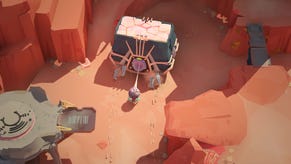Cocoon review: this puzzler is a world-hopping delight
Silky smooth
Cocoon is a puzzler where worlds are contained within orbs, and it's your job to unpick puzzles with your ability to hop in and out of them, as well as carry them on your back. While it might sound complex, the worlds these orbs contain steer you carefully towards a clear goal every time: solve the problem, then grab your orb on the way out. Before you know it, you're carrying orbs within orbs and you're unravelling a cosmic mystery where the floor might be a biomechanical stingray or the path forward a spinal cord composed of ferns. I am convinced everyone should spring to action and hoist an orb on their shoulders. I couldn't put mine down.
You play as a winged insect lad birthed from a chrysalis and plopped into a mysterious desert land. Quickly, you learn progress comes from hoisting an orange orb onto your back and using it as a key to manipulate the world's biomechanics. One of the first puzzles has you place your orb in a pipe and step on pressure pads as it makes its way along, rotating bits of the tube so the orb drops onto a cradle. Not only will the path ahead slide open, you'll instinctively learn to grab the orb before you move on. Insect lad is nothing without his orb, and the world, it seems, lies dormant without them both.

Once you've transported the orb far enough and cracked the world's final vault like you've given a server room a sports massage, you fight against a colossal moth in a small arena. You must dodge its charges, then enter a rotating deathtrap where electrified bees produced from its wings plunge into the dirt, and form a sequence of spiky attack balls rolling back and forth. These fights with different insectoid gods crop up at the zenith of each world, and operate as moving puzzles where you're separated from your usual toolkit and forced to use whatever's knocking around. In a way, they're reminiscent of Super Mario fights where you're ducking and weaving and waiting for that one opportunity to bonk them on the head.
Defeat the moth in the first world and the game's pattern clicks into place. Your orange orb unlocks a power to reveal invisible platforms! And these platforms lead to a green orb, which you can warp into with the smoothest little animation. Green orb's world is awash with flora and the patter of rain and... those invisible platforms. Huh. Better hop out of the green world, grab the orange orb, and hop back into the green world with it nestled between your wings. As you defeat more bosses and unlock more orbs, you learn that Cocoon is about managing your growing arsenal of marbles.
And while the game's recursive theme might sound impenetrable for folks who aren't puzzle-heads, I guarantee you that if I can inhabit insect lad, then you can. The geography of Cocoon's worlds are brilliant at gradually exposing you to new tools, and they're designed in such a way as to provoke instinctual responses. Insect lad might have wings, but he's entirely reliant on his body weight and his ability to carry orbs. And because you know his limits, it's easy to get a feel for how a new platform might work, or a button, or what to do if a little robot emerges and hovers by his side.

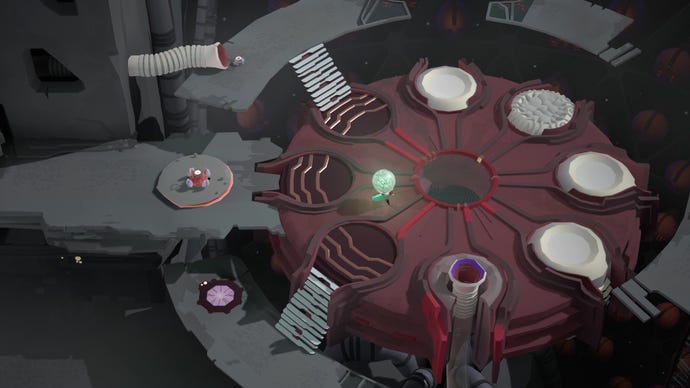
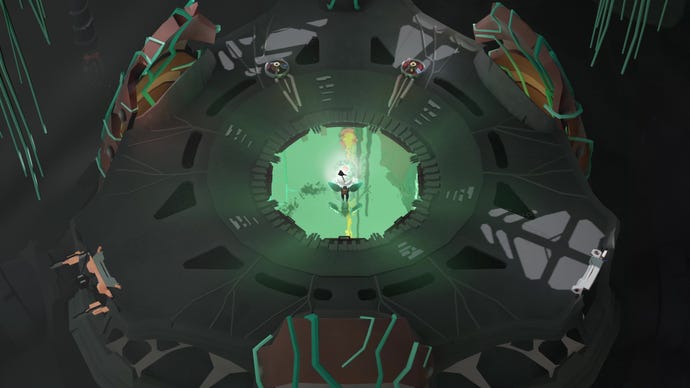
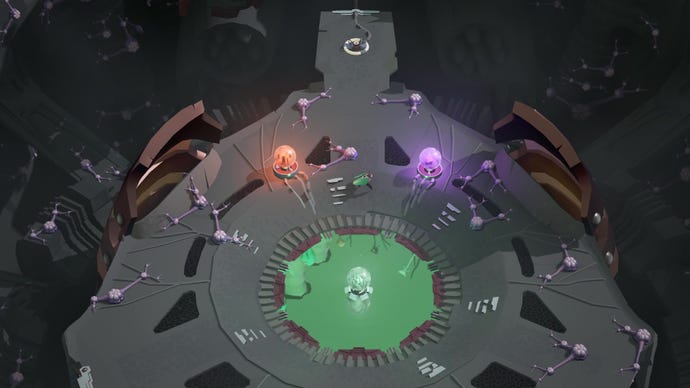
For instance, I needed to get said flying robot companion to the other side of a walkway. Blocking our way was a strip of orange gloop that would snatch my pal from the air and prevent him from crossing with me. At the far end of the walkway was a platform used for whizzing between worlds. Before any of the walkway shenanigans lay a different orb for me to hop into, so I whizzed inside and the robot followed me. Here lay another strip of gloop that would trap my robot pal. The solution was clear: trap the robot in the gloop here, then re-emerge into the world with the problematic walkway. I could then hoist the orb that contained the trapped robot onto my back and cross the problematic walkway. And there it was! I'd essentially used a world as a Pokéball! Magic.
Mix in the properties of an orb and its world-you-can-hop-into, with your limited methods of interaction, and you get self-contained puzzles that don't lose themselves to grand, recursive ambitions. Cocoon's visual and audio cues signal when you might need to world-hop and whether your orb's a puzzle in itself or just weight to activate switches. I don't think I ever encountered a level which required silly levels of brain-busting world swappery, as solutions are often intuitive twists on a blueprint, where the twist is a clever use of an orb that shuffles the world around you in a surprisingly grounded way. And just when you might be getting comfortable, a new orb power can shake up exploration and guide you in a new, exciting direction.
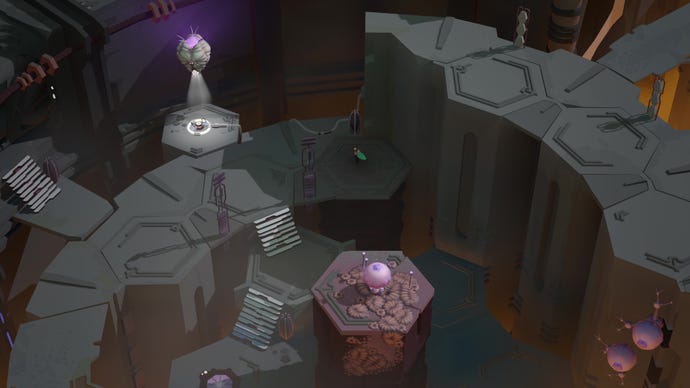
Your gradual exposure to the way certain things work isn't only a merit to puzzle design, but also grants you a wonderful sense of discovery that fits your mysterious birth as insect lad. When you're instinctively pulling bulbs and leading a cybernetic hermit crab to rest as a makeshift bridge, or watching as a door unfolds itself like a giant's rib cage, it feels like you're performing a task hardcoded into your shell. The game's story might be an abstract tale of seemingly corrupt insects lurking inside worlds, but as you untangle these worlds and store them within each other like a recursive backpack, it begins to hit you: "Damn, I'm actually like, picking up the pieces of this alien universe and reuniting them."
As someone who doesn't usually care for puzzle games, Cocoon gripped me the entire way through its seven-hour-ish runtime - thumbs up for a nice, compact game. Its world-hopping gimmick sees you inhabit orbs laid out with such precision it makes each problem clear, and has you experiment with literal worlds-within-worlds as if it's second nature. Anyone can take on the responsibility of insect lad and gain the confidence to construct a backpack swimming with marbles, all while going on a grand adventure that feels like you're liberating a sequence of CPU cores from a wriggling virus. What are you waiting for? Hop in.
This review is based on a review build of the game provided by publishers Annapurna Interactive.






